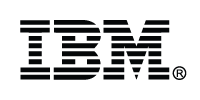Data automation can revolutionize business practices, supporting more agile, scalable, and customer-focused operational ecosystems. From reducing manual workloads to driving insights for better decision-making, data automation moves businesses forward, improving customer experiences while enabling companies to operate more effectively in competitive markets. With its intricate supply chains and need for real-time data, the electronics industry is especially well-positioned to benefit from data automation. From reducing costs to streamlining critical product updates, data automation fosters dynamic growth and competitive resilience.
Data Automation: A Brief Overview
The electronics sector often deals with large, diverse data sets without efficient means to extract useful information into actionable insight. Fortunately, data automation is revolutionizing
ineffective data handling and processing for this space, supporting informed, dynamic growth.
What is data automation? It refers to using technology to streamline and support the entire data processing lifecycle by automatically handling data collection, cleaning, integration, and analysis. Today’s sophisticated software and algorithms can emulate human data handling at scale, transforming complex data environments into systematic, actionable insights to support more intelligent and agile operations.
Transforming Processes with Data Automation
Data automation can be transformational, minimizing or eliminating manual data tasks so organizations can allocate human resources toward more strategic efforts.
Data Collection
The electronics industry faces a constant influx of data from suppliers, manufacturers, and distributors, all of which are critical to operations. However, the time and resources required to collect this data from multiple sources often make it obsolete before it becomes accessible to various levels of the organization. One of the many advantages of automated data collection is the near instantaneous speed at which product, supply chain, and consumer data can be collected—, whether structured or unstructured, internal or external.
Data Transformation and Enrichment
Data automation aggregates information from various sources, efficiently cleansing and enriching it to meet specific organizational needs. The supporting technology rapidly converts this data from across operations into clear, actionable snapshots, standardizing it into a unified format for easier analysis and visualization. This process ensures that information remains consistent and usable across all electronics production and distribution stages, enabling smoother decision-making and operational efficiency.
Data Analysis
Rather than dedicating entire teams to examining, interpreting, and extracting insights from countless sources, data automation uses algorithms and statistical models to organize information efficiently. The speed of this analysis offers quick identification of trends and irregularities in the electronics industry procurement processes to improve and accelerate informed decision-making.
Data Capture
Automated data capture is critical in data-driven environments like the electronics industry. Human-generated data capture can be cumbersome and error-prone. However, implementing technology to automate this process allows businesses to extract unstructured data from any document or image (paper or electronic), resulting in faster and more accurate data compilation.
Data Entry Automation
Among the many advantages of automated data entry is eliminating the need for manual input. This process automatically captures, processes, and stores information, reducing errors and delays while transforming data into easily accessible, business-ready formats. This is especially beneficial in the electronics industry, where precision and compliance are critical to maintaining operational efficiency and meeting regulatory requirements.
Data Validation
Real-time data validation utilizes automated systems to help maintain accuracy and consistency, immediately correcting errors and information gaps before storage or further processing. It ensures that all data meets pre-determined quality standards, validating its accuracy, completeness, and integrity. Data validation is a critical step in data management that helps maintain critical data reliability throughout its lifecycle.
Data Automation Use Cases
Data automation makes it easier to maintain real-time data synchronization and accuracy across different stages of production and distribution. To truly understand the many benefits of source data automation, let’s explore some use cases related to the electronics industry.
Use Case #1: Data Synchronization Across Manufacturing Facilities
Managing data flow between multiple manufacturing facilities can be complex, as facilities often use varying systems for production tracking, inventory management, and quality control. This fragmentation can lead to delays and data inconsistencies while obstructing a unified view of operations in the electronics industry. Data automation, however, can integrate the facilities into a cohesive system, allowing for real-time data synchronization across the production process, improving visibility, quality control, and streamlining operations.
Use Case #2: Supply Chain Coordination of Just-in-Time Inventory
The electronics industry heavily relies on supply chain coordination of just-in-time inventory to minimize holding costs and ensure materials arrive precisely when needed. In many cases, coordinating supply chain data among suppliers, manufacturers and distributors can be tricky, thanks to varying lead times and order volumes.
However, data automation can integrate systems with suppliers and logistic providers, offering instant and accurate data exchange around inventory levels, order statuses, and shipment tracking for real-time visibility and streamlined communications. The result is real-time inventory management, including built-in predictive analytics, to speed up responsiveness, reduce stockouts and overstocks, and improve overall collaboration for more efficient inventory logistics.
Advantages of Data Automation
The benefits of data automation are abundant, addressing common challenges in the electronics industry by streamlining cumbersome and complex data environments to facilitate improved decision-making, operational efficiency, employee productivity, and customer satisfaction.
Improved Accuracy and Quality
Better data quality in electronics manufacturing and distribution is critical, as inaccuracies can lead to production delays or compliance issues.
Faster Decision Making
Rapid access to accurate data helps businesses in the electronics sector significantly improve agility in response to market demand, inventory levels, or supply chain disruptions, improving customer satisfaction.
Reduced Operational Costs
Among the many benefits of automated data collection and entry is reducing the need for manual data handling, which is especially beneficial for companies that manage cumbersome transactions and complex logistics.
Integration with Business Systems
Seamless data integration is essential for streamlining communication and efficiencies between electronics manufacturers and distributors that rely on multiple software platforms for production planning, supply chain management, and customer relations.
Scalability
Data automation’s ability to efficiently pace growing data volumes addresses a key challenge in the electronics sector as production scales to meet global demand. One of the main advantages of data automation is that it allows organizations to scale intelligently, ensuring sustained growth.
Conclusion
The strategic use of data automation tools and technologies can provide a substantial competitive advantage in an operational landscape that is evolving as rapidly as electronics manufacturing, distribution, and procurement. In today’s crowded economy, stagnation deters growth, making adaptation necessary to compete and thrive in highly dynamic markets. Strategic solutions providers like Orbweaver can help navigate digital transformations, ensuring your company reaps the benefits of data automation and modern data management practices.






